The following article was published by Future Travel Experience
FTE explores a selection of the top trends and technologies for 2025 and beyond, including robotics and automation, Artificial Intelligence, biometrics and digital identity, immersive technologies, and more.
The beginning of a new year brings with it an opportunity, coinciding with the recent CES 2025, to take a look at the trends, as well as the new and emerging technologies, which will shape the air transport industry over the next 12 months and beyond. This year, our list features 12 trends that will play a crucial role in improving passenger experiences and enhancing business performance. We explore everything from robotics, automation and Artificial Intelligence to biometrics and digital identity, immersive technologies, sustainability, and more.
Robotics and automation
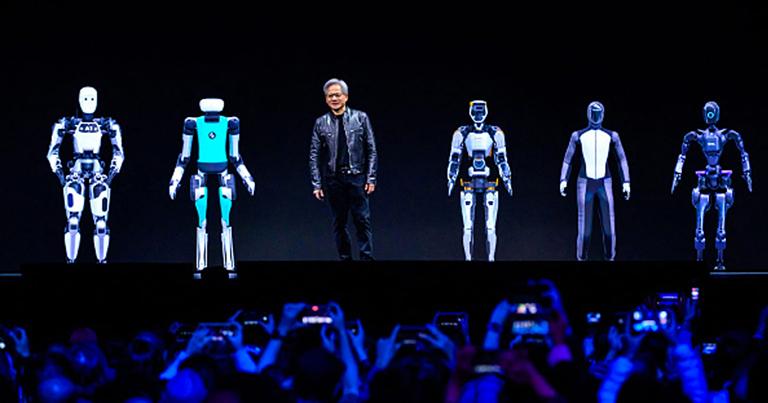
A continuing and overriding trend this year and beyond will be the increasing implementation of automation and robotics, which are redefining efficiency and reliability across aviation operations. On the ground, robotics has revolutionised baggage handling, aircraft maintenance, and even passenger services. Airports are leveraging autonomous vehicles and robotic assistants to streamline workflows, reduce errors, and improve overall customer satisfaction.
There is quite an advancement in personal assistant robots, as evidenced by their prevalence at CES 2025. Last year, we were particularly impressed by Samsung’s Ballie personal assistant robot, which is equipped with an onboard projector and enhanced Artificial Intelligence (AI) capabilities – an update was showcased at CES 2025 ahead of its launch this year. FTE has been talking to a number of industry stakeholders and robotics companies and we see some developments in this space, and potential for personal assistant robots to be used for a VIP touch in lounges and to greet passengers at check-in, for example. Munich Airport has introduced the JEEVES service robot, while Emirates is utilising Sara – a portable robotic check-in system.

The rise of humanoid robots was addressed by NVIDIA founder and CEO Jensen Huang, who kicked off CES 2025 with a keynote that included robotics and autonomous vehicles. Meanwhile, Elon Musk has said “humanoid robots will be the biggest product in history”, projecting that there will be 10 billion of them by 2040. So, now is the time for our industry to define how to integrate this technology into the workforce and FTE has been leading the charge. The vast potential of this trend was explored in detail in the FTE Robotics & Autonomous Vehicles Symposium at FTE Global 2024, with fascinating insights from the likes of PIT, United Airlines, International Airlines Group, Springshot, Royal Schiphol Group, and All Nippon Airways. Watch the full video here.
Cincinnati/Northern Kentucky International Airport (CVG) – a Corporate Partner of the FTE Digital, Innovation & Startup Hub – is among the most progressive in the robotics and automation space. A great example is International Airlines Group (IAG) – parent company of British Airways, Iberia, Aer Lingus, Vueling and LEVEL – and Aurrigo commencing deployment of the Auto-DollyTug autonomous baggage tractor at CVG.
Pittsburgh is known as the ‘Robotics Capital of the World’ and Pittsburgh International Airport (PIT) – a Corporate Partner of the FTE Digital, Innovation & Startup Hub – has done several trials of various autonomous and autonomy-enabling technologies over the past two years, and it is a trend that will be further explored at the FTE World Innovation Summit hosted by PIT on 13-15 May 2025.
Another exciting field of activity for revolutionary robotics projects can be found on the apron. Together with Fraunhofer Institute (a member of the FTE Digital, Innovation & Startup Hub and the FTE Baggage Innovation Working Group), Munich Airport is developing the unique BagBOT. This robot will be equipped with innovative gripping technology and provide support for the remote-controlled loading and unloading of aircraft.
Robotics and automation is a key focus area of the FTE Baggage Innovation Working Group (BIWG). The video below from BIWG Partner Journey Robotics illustrates the potential of these technologies to help counter rising labour costs and provide a constant baggage flow, reducing peak demands.
Read more in part 1 and part 2 of our comprehensive focus on robotics and automation.
Building on the successful collaboration between Future Travel Experience (FTE) and Pittsburgh International Airport (PIT) for the Aviation & Robotics Summit in 2023 and 2024, the FTE World Innovation Summit (Pittsburgh, 13-15 May 2025) will bring together over 400 air transport industry innovators for a three-day interdisciplinary series of conference sessions, interactive workshops, innovation tours, and networking opportunities, all taking place in Pittsburgh. This worldwide summit will unite inventive minds to tackle aviation’s biggest challenges, explore PIT’s Terminal Modernization, and uncover the city’s vibrant tech and innovation landscape.
Artificial Intelligence, GenAI, and Data Analytics
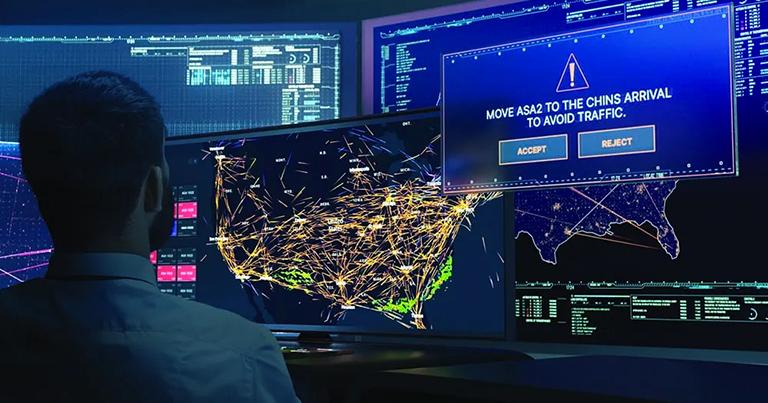
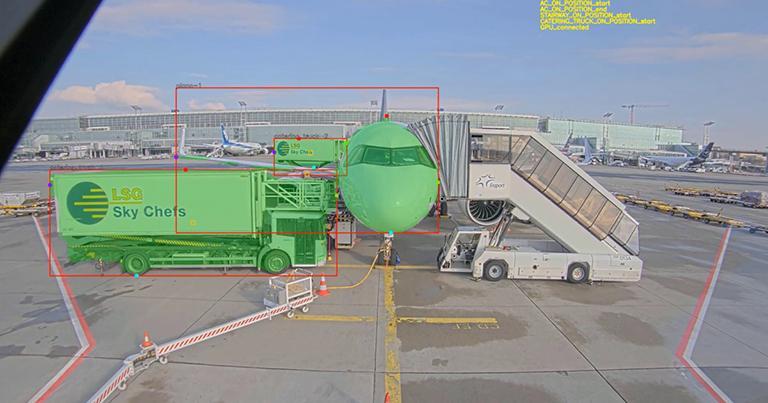


Artificial Intelligence (AI) was undoubtedly the hottest topic, once again, at CES 2025, with AI seemingly integrated into almost every new technology solution. So, we definitely see AI as a key trend once again. AI is a core theme of the FTE Digital, Innovation & Startup Hub, and the FTE AI Symposium at FTE Global 2024 explored the best use cases for AI today, tomorrow and well into the future.
AI and Generative AI (GenAI) are reshaping the aviation industry in profound ways. These technologies, combined with data analytics, have become the driving forces behind optimisation, personalisation, and innovation. AI-powered systems enable airlines to optimise flight paths, improve air traffic management, and enhance fuel efficiency by analysing real-time data streams. Generative AI further supports this by modelling complex scenarios, such as optimising schedules in response to changing weather or air traffic conditions, ensuring operational resilience.
Predictive analytics powered by AI minimises disruptions by proactively identifying maintenance needs and anticipating potential system failures. For instance, advanced algorithms can analyse patterns in sensor data to flag issues long before they impact operations.
Additionally, AI supports dynamic pricing strategies, allowing airlines to adjust ticket prices in real-time based on demand and external factors. By integrating AI, GenAI, and data analytics, the aviation industry is not just optimising its operations – it is fundamentally transforming the passenger experience and ensuring long-term competitiveness in an evolving landscape.
Travel-inspiring solutions for passengers include Alaska Airlines’ world-first Generative AI flight search tool – Alaska Inspires – which can be used by travellers to curate their next trip. AI also promises to enhance operational efficiency, with the innovative AI@Fraport initiative being a source of inspiration for the entire industry. Fraport – a Corporate Partner of the FTE Digital, Innovation & Startup Hub – is utilising AI to make processes more efficient and redesign work environments, while enhancing the passenger experience and strengthening the group’s digital competencies.
Indeed, using AI analytics to drive efficiency while supporting staff can lead to improvements in sustainability (reduced fuel burn), staff resiliency and operational performance, all things that ultimately lead to a greater passenger experience.
Interested in the latest technologies and trends? Sign up to our newsletter >>Internet of Things and Private Wireless Networks

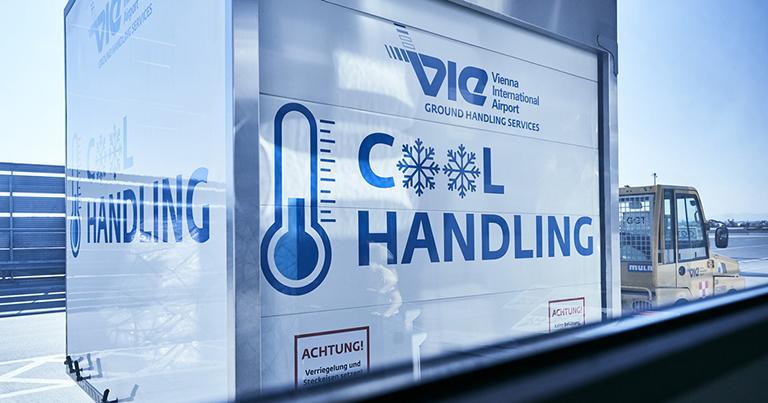
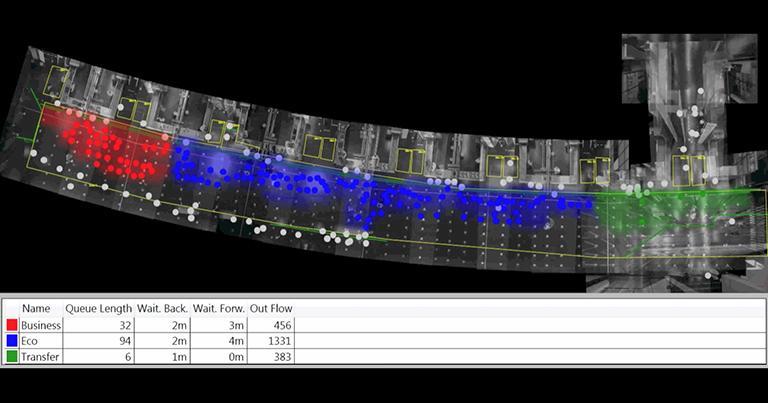
The Internet of Things (IoT) is at the heart of the technological transformation taking place across airlines and airports. To support the massive influx of data generated by IoT and robotics, the underlying infrastructure must evolve significantly. This includes the deployment of high-speed, low latency networks to enable real-time data transmission, edge computing systems to process data closer to its source, and robust cloud platforms for storing and analysing large volumes of information. Additionally, advancements in cybersecurity are critical to safeguarding this interconnected ecosystem against potential threats. Beyond the technical backbone, airports and airlines are investing in scalable, flexible IT systems that can adapt to the increasing complexity and demands of IoT applications. Together, these infrastructure advancements ensure that IoT technologies not only function seamlessly but also drive innovation across the aviation industry.
Among the Corporate Partners of the FTE Digital, Innovation & Startup Hub that are embracing the potential of IoT is Miami International Airport (MIA), which is evolving into a ‘Smarter Airport’ to handle increasing passenger and cargo traffic. This transformation involves implementing a comprehensive IoT framework managed from a central cloud-based hub. Meanwhile, Southwest Airlines is currently harnessing the power of IoT for data acquisition for its Facilities Teams and to streamline control processes with its Ground Operations Teams, and Aeroporti di Roma (ADR) has several workstreams related to IoT for real-time updates on the progress of the passenger’s journey, the status of operational processes, and more.
It looks more likely than ever that in the future all ‘things’ will be connected – from airport assets to IFE systems and sensors integrated into seating – providing the industry with a constant stream of data which, if used correctly, could deliver new levels of operational efficiency and enable personalisation like never before. Learn more about how MiA, Southwest, Vienna Airport, United Airlines, ADR and more are exploring IoT in this article.
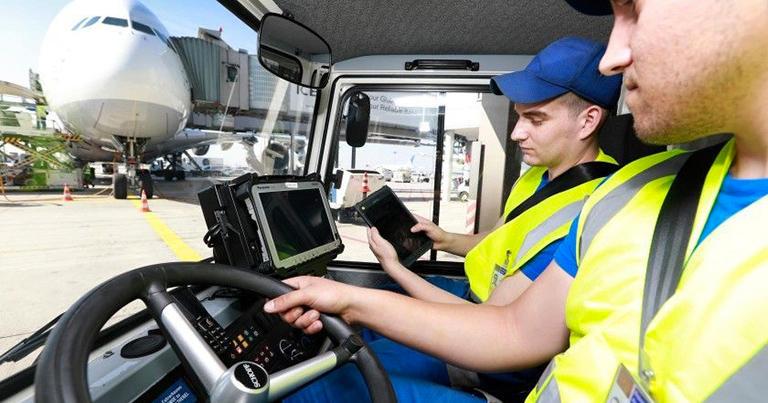

The benefits provided by Private Wireless Networks (PWNs) are increasingly clear, including improved network security and enhanced operational efficiency through superior coverage. Indeed, PWNs are vital for those airports and their partners exploring technologies such as the Internet of Things and autonomous vehicles.
PWNs were explored in detail in a dedicated symposium at FTE Global 2024 led by Samuel Ingalls, Principal, Barich, Inc, and an FTE Advisory Board member, with contributions from Dallas-Fort Worth International Airport, Miami International Airport, Imagine Wireless, and more. “The PWN technology is proven, being something that is used each and every day – and which works stunningly well,” Ingalls shares. “Connectivity in aviation is no longer a ‘nice-to-have’ – it is an imperative. True and sustained digital transformation starts and grows with that robust connectivity.”
Miami International Airport – a Corporate Partner of the FTE Digital, Innovation & Startup Hub – has made significant strides in establishing a PWN to enhance operational efficiency and the employee experience. This is enabling various innovative applications, such as Internet of Things devices for asset tracking, support for mobile kiosks and self-service devices, and high-bandwidth connectivity for video analytics. MIA plans to continue expanding the network’s capabilities and coverage to modernise its operations.
Fraport – also a Corporate Partner of the FTE Digital, Innovation & Startup Hub – has successfully licensed and implemented a Private 5G Network at Frankfurt Airport. The network gives the airport an environment in which it can control data and voice communication autonomously. Thanks to the network’s high-bandwidth and low-latency, Fraport is able to accelerate innovative projects, such as autonomous driving on the apron. The 5G network also enables real-time data transfer, which may be necessary for future applications such as video-based monitoring of airport facilities via robots or drones.
Learn more in our comprehensive focus on Private Wireless Networks here.
Interested in the latest technologies and trends? Sign up to our newsletter >>Immersive technologies: Augmented Reality, Virtual Reality, and Extended Reality
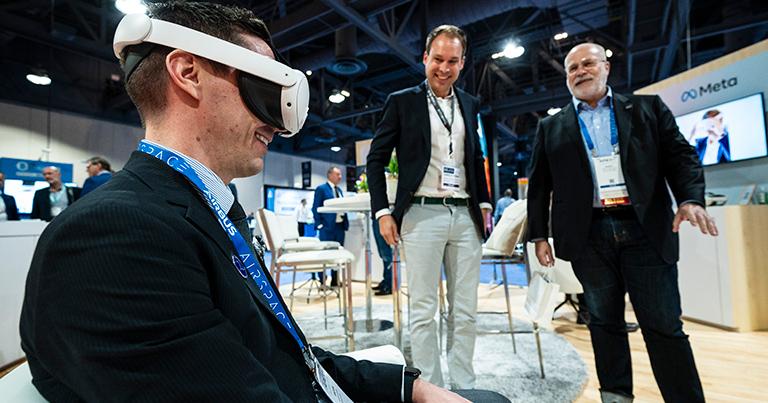
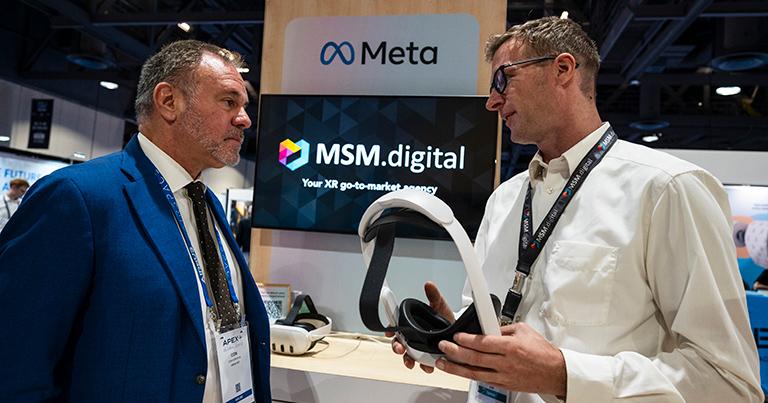
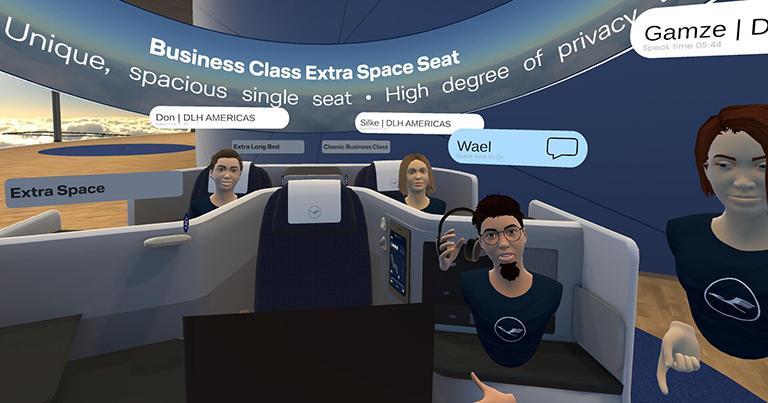
Immersive technologies like Augmented Reality (AR), Virtual Reality (VR), and Extended Reality (XR) are revolutionising how aviation professionals are trained. Pilots, flight attendants, ground operations, and technicians now have access to cutting-edge simulation environments that replicate real-world scenarios with remarkable accuracy. VR-based training programs allow crews to practice emergency procedures, navigate complex procedures, and respond to challenging conditions in a safe, controlled environment. Similarly, technicians can use AR overlays to access detailed schematics and step-by-step guidance during maintenance, reducing errors and enhancing efficiency. These immersive solutions not only reduce training costs but also improve skill retention and confidence, ensuring aviation professionals are better prepared for real-world challenges.
In terms of passenger experience, the most impressive implementation of immersive technologies that FTE has seen is Lufthansa’s official launch in October 2024 of its Extended Reality (XR) Inflight Experience, becoming the first airline worldwide to offer virtual and augmented reality entertainment options for passengers in its Allegris Business Class Suites. Meta showcased this technology at FTE Global 2024, marking a world-first opportunity for the public to try the new Mixed Reality headsets. Lufthansa’s new XR Inflight Experience undoubtedly represents a significant step forward in inflight entertainment, setting a new standard in the aviation industry as airlines increasingly look to differentiate their premium cabin offerings.
Immersive tech, such as the Apple Vision Pro, is potentially game-changing and our industry must now be defining the use cases, how AR, VR and XR can be used as a sales tool to sell destinations, and more.
Interested in the latest technologies and trends? Sign up to our newsletter >>Digital displays reinvented


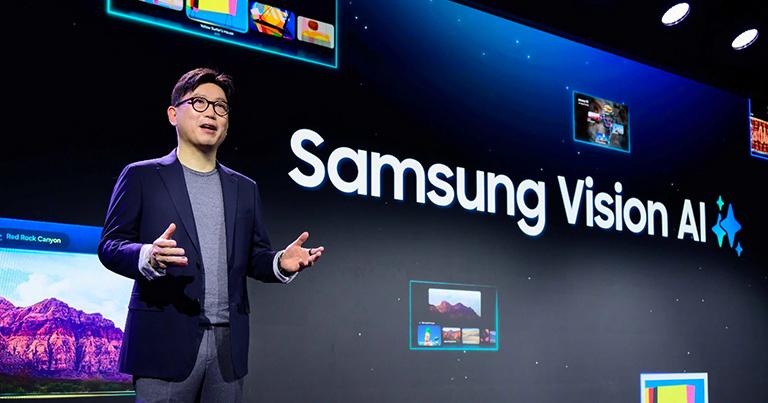
Once again, among the coolest tech on show at CES 2025 was the impressive advancements in digital displays. This use of space is clearly what the future will look like, whether it’s the Las Vegas Sphere or ‘The Wonderfall’ – a 14m-tall digital display at Changi Airport. There are clear operational benefits too, from guiding travellers through security to creating a more effective, exciting retail environment.
At CES 2025, Samsung unveiled ‘Vision AI’ – a new direction for its next-generation digital displays. Its screens are said to be at “the intersection of technology, art and utility” – one example being the transparent MICRO LED, which is anticipated to have commercial applications in the near future.
Meanwhile, the centrepiece for LG at CES 2025 was the SIGNATURE OLED T model, which is designed to blend seamlessly into the surrounding room when not in use.
Interested in the latest technologies and trends? Sign up to our newsletter >>Personalisation

Travellers increasingly expect end-to-end personalisation at every step of their journey. As technology evolves, customers expect their travel experience to adapt and evolve in a way that is intuitive, contextual and seamless. One of the most vivid examples of this to come out of CES 2025 was Delta CEO Ed Bastian’s keynote in the Las Vegas Sphere, which included the announcement of Delta Concierge, which uses Generative AI to create personalised experiences. “Our vision for Delta Concierge is that it will serve as an AI-powered personal assistant that combines the context of who our customers are and how they like to travel, with the deep knowledge and insights we’ve built,” said Bastian. In future releases, Delta Concierge will enable customers to automatically connect to Delta Sync Wi-Fi and Delta Sync seatback, the airline’s personalised inflight entertainment experience.
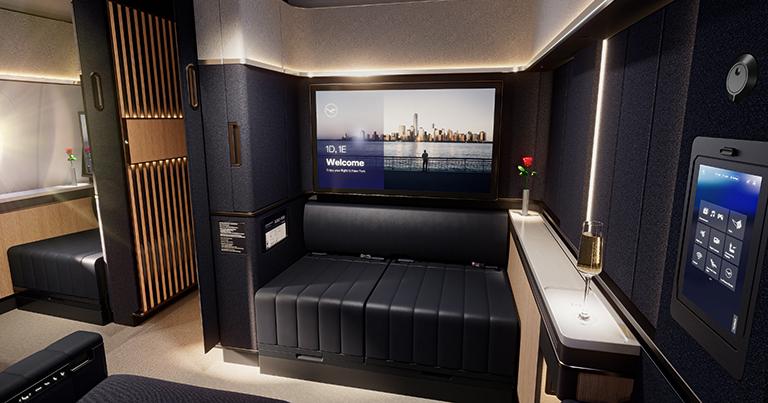
Lufthansa took personalisation to a new level with the launch of Allegris – its new long-haul travel experience. At its heart, Allegris is about individualising travel and doing so in a way that is simple for customers. The individuality comes in passengers’ ability to create their own travel experience according to their personal needs, with choices in seats, meals and other elements of the journey. Indeed, the Lufthansa Allegris offer features seven kinds of seat. “We believe that premium is about tailoring your product offer to the needs of your customers and delivering the opportunity to customise their trip based on their personal preferences,” said Dr. Björn Becker, Head of Program Future Intercont Experience, Lufthansa Group.
Cathay Pacific’s new business class Aria Suite has similarly generated a lot of buzz in terms of personalisation, while JetBlue has launched ‘Blueprint by JetBlue’ – a personalised inflight experience platform designed to provide travellers with more customisation across their journey.
The personalisation trend is sure to continue throughout 2025 and beyond.
Interested in the latest technologies and trends? Sign up to our newsletter >>Collaborative innovation
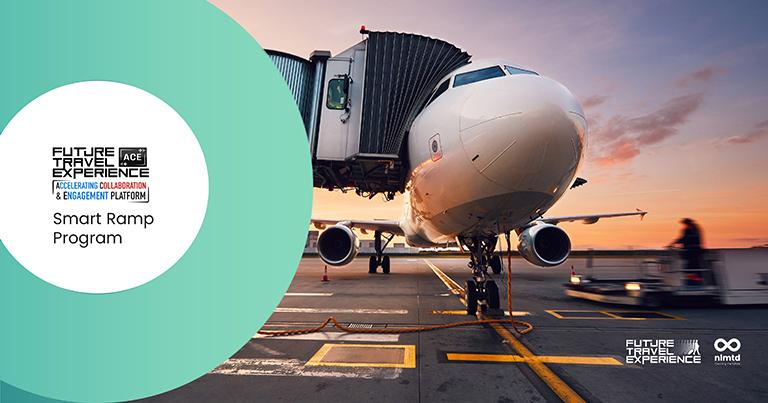
Future Travel Experience (FTE) firmly believes that the best innovation is always collaborative innovation and last year, together with our partner innovation consultancy nlmtd, we launched the new FTE Accelerating Collaboration & Engagement (ACE) platform, which is committed to driving real collaborative action among stakeholders, while ‘Collaborative Transformation’ is the theme of FTE Global 2025.
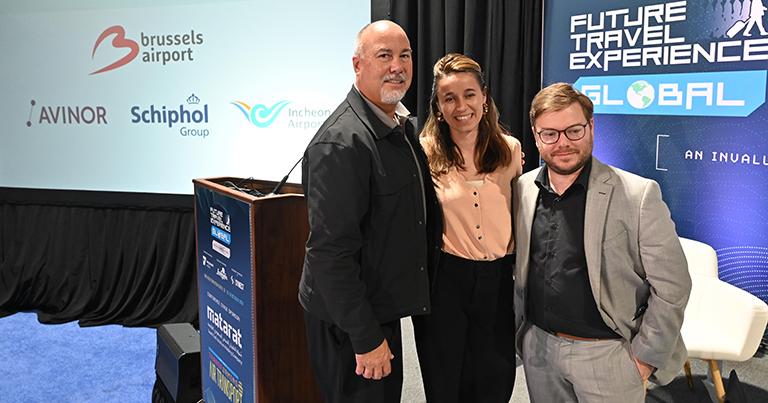
Through ACE, we aim to facilitate fast progress and dynamic change in key areas of the aviation industry. Joining forces will get us to winning solutions a lot faster – the phased approach will move from knowledge-sharing through challenge-based innovation, assessing which solutions truly work, and exploring the potential for shared investments in exciting new technologies. The first project under the ACE platform was BOOST – a global coalition dedicated to baggage transformation through robotics and automation, with members including Royal Schiphol Group, Avinor, Incheon International Airport Corporation, and Brussels Airport – all of which are members of the FTE Baggage Innovation Working Group. BOOST leverages the collective innovation power of multiple airports, emphasising hands-on execution, Proof of Concepts, and rapid implementation of new technologies, which you can read more about here. The next focus area under the ACE platform is on creating ‘Smart Ramp’ operations, exploring everything from autonomous vehicles and inspection approaches through to timestamping and FOD detection. This month, Schiphol Group became the latest member of the pioneering FTE Smart Ramp program, joining International Airlines Group and Miami International Airport as first-movers. Learn more here.
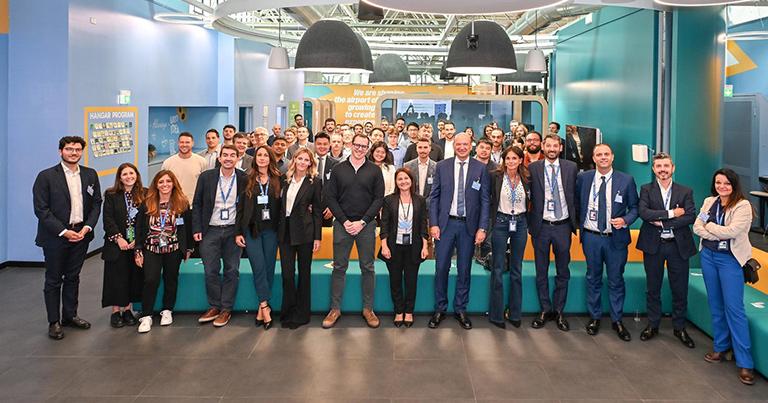
Collaboration with startups also remains firmly back on the agenda. It remains a challenging environment for some startups to raise funds and it is an important moment for the industry to support them. Many progressive airlines and airports are increasingly collaborating with high potential startups and scaleups. Indeed, the exponential growth of the FTE Digital, Innovation & Startup Hub demonstrates this – Heathrow and Fraport are among the latest Corporate Partners to join, while we now have over 500 approved startup members – and we expect the trend to further accelerate in 2025 and beyond. Among our Corporate Partners, Aeroporti di Roma recently held its third ‘Call for Ideas’ from startups as part of its ‘Runway to the Future’ acceleration programme; Saudia Group is this month staging the Saudiathon challenge to unleash creative, disruptive ideas and engage with tech-driven startups; Pegasus Airlines has established a Technology Innovation Lab in Silicon Valley – a key part of which will be evaluating collaboration opportunities with startups, and much more.
Interested in the latest technologies and trends? Sign up to our newsletter >>Biometrics and digital identity

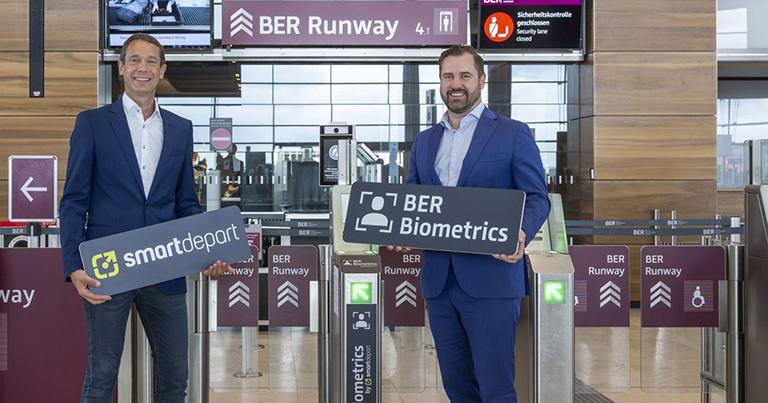
Biometrics and digital identity has become a perennial fixture in our annual trends report. Leveraging biometrics is a foundation for improving the customer experience, but also a key to increasing security across airports and ultimately across borders. There is a clear business case for the technology, which was explored in-depth in the ‘Digital Identity & Biometrics Symposium’ at FTE Global 2024, which focused on building compelling business cases for a global industry roll-out, with fascinating insights from Miami International Airport, British Airways, IDEMIA, Alaska Airlines, Transportation Security Administration (TSA), and CLEAR.
The post-pandemic preference for contactless technologies has only served to accelerate biometric adoption and its acceptance by travellers. In its ‘2024 Passenger IT Insights’, SITA indicates that: “The outlook for the future of Digital Travel Credentials is highly promising, given that in total three in four passengers would be comfortable having their passport stored on their phone (75%) and similar numbers would be comfortable with providing their digital identity and biometrics in advance of travel (73%).” Meanwhile, key metrics from the TSA indicate that 92% of Americans trust TSA for identity validation, with 78% accepting biometrics.
Implementation of biometric and digital identity technology continues at pace globally. Fraport – a Corporate Partner of the FTE Digital, Innovation & Startup Hub – is notable for the biggest biometrics implementation in the world. From enrolment at a kiosk or counter, to pre-security automated gates and self-boarding gates, passengers can use biometric technology to seamlessly pass through each stage of the journey by simply scanning their face. The many projects we have reported on also include Abu Dhabi Airports launching a Smart Travel project at Zayed International Airport; Berlin Brandenburg Airport introducing BER Biometrics as it moves “towards a smart airport of the future”; SITA and IDEMIA Public Security collaborating to advance interoperability, trust, and data security through a globally recognised Digital Travel Ecosystem; and many more.
Biometrics and digital identity will undoubtedly remain a key area to watch in 2025.
Interested in the latest technologies and trends? Sign up to our newsletter >>Sustainability
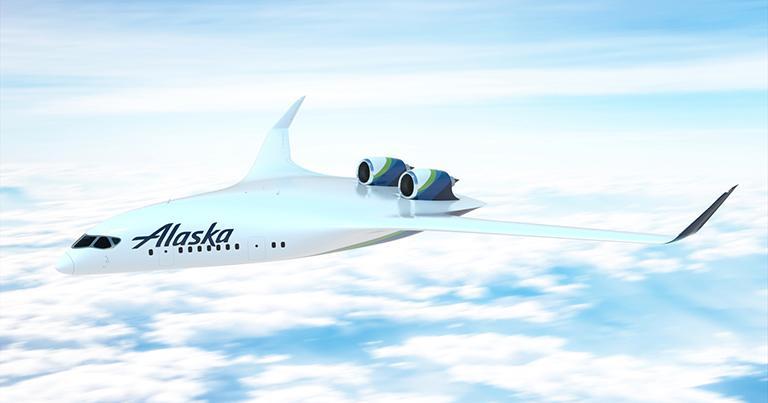
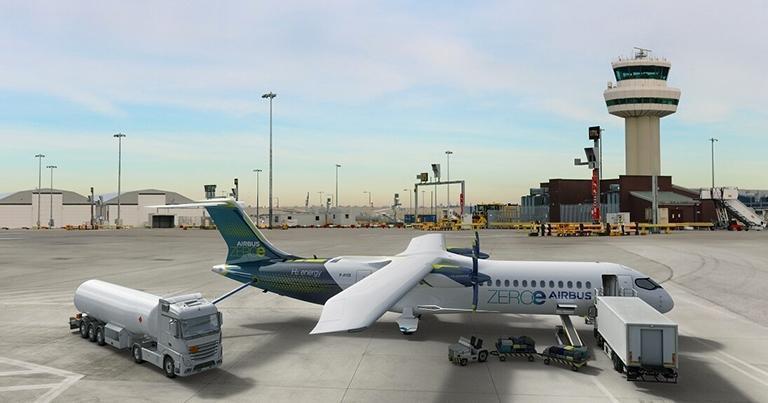
A common theme throughout the majority of innovation projects taking place across air transport is sustainability, which remains a key priority with the global industry’s commitment to reaching net zero carbon emissions by 2050.
Electric and hybrid aircraft are no longer just theoretical concepts – they are tangible realities nearing commercial adoption. These technologies promise to significantly reduce greenhouse gas emissions while maintaining operational efficiency. Hydrogen fuel cells are gaining traction as a viable and transformative energy source. By using hydrogen as fuel, aircraft can achieve zero-emission flights. While challenges remain, such as developing infrastructure for hydrogen production, storage, and distribution, collaborative efforts across the industry are accelerating progress. Hydrogen’s potential extends beyond propulsion – it can also play a role in powering airport operations and auxiliary systems. For the first time, we are not just mitigating aviation’s environmental impact, we are actively reimagining its role in a cleaner, greener world. Sustainable Aviation Fuel (SAF) represents a critical innovation in the travel industry, offering a renewable alternative to traditional jet fuel. Its adoption is essential for meeting global climate targets and addressing the growing demand for environmentally responsible travel solutions. By fostering advancements in fuel production technology and supporting a circular economy, SAF is reshaping the industry’s sustainability efforts while ensuring long-term viability and growth.
Among the many pioneering projects underway, Avinor is participating in a test arena for zero and low-emission aviation, Alaska Airlines is investing in JetZero to propel innovative next-generation aircraft technology, Air New Zealand has taken significant steps in its Mission Next Gen Aircraft program, and much more.
The FTE Energy & Sustainability Symposium at FTE Global 2024 explored the sustainability revolution in-depth, with compelling insights from the likes of Swedavia, Cincinnati/Northern Kentucky International Airport, JetBlue Ventures, Southwest Airlines, and more. Watch the full video here.
Interested in the latest technologies and trends? Sign up to our newsletter >>Accessibility
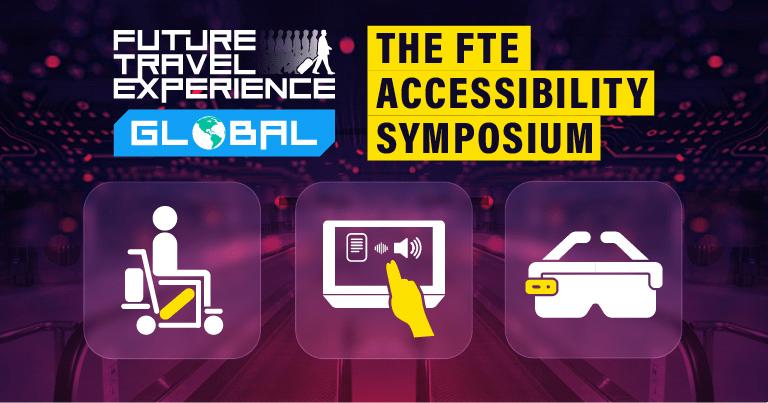
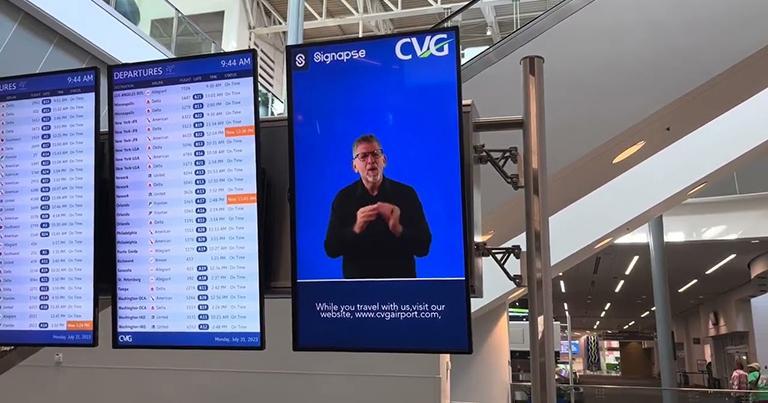
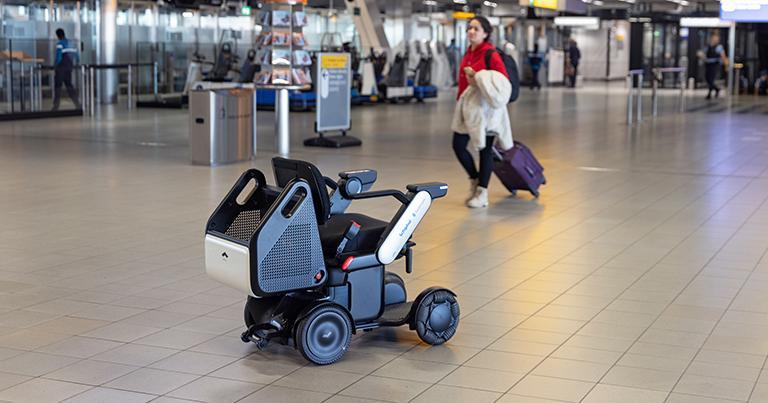
Accessibility and making travel more accessible for all remains an important trend and one that we will be exploring in-depth in the FTE Accessibility Symposium at FTE Global 2025.
2024 saw new entrants to the accessibility space, including technology for autonomous PRM devices. Cincinnati/Northern Kentucky International Airport – a Corporate Partner of the FTE Digital, Innovation & Startup Hub – is among the most progressive in terms of accessibility and, in addition to the deployment of autonomous mobility vehicles, has experienced success with Signapse for Artificial Intelligence (AI)-powered ASL digital signage. Meanwhile, in this article, we reported on the new Ostrum platform – an Uber-style service designed to solve many of the issues currently experienced by those requiring airport special assistance, which is live at London Luton Airport and London Gatwick.
In 2025, we will see more technology in the accessibility space for other disabilities and passenger needs. While sensory rooms and translation tools are now becoming common offerings at airports, it is important that the industry collaborate directly with the disabled communities to understand the needs that they have when travelling by air and together developing and implementing tools for navigation and comfort. Furthermore, we will see technology that will aid airports and airlines not only for passengers with special needs, but technology and tools that can support workforce development, employees with language barriers, and employees who are neurodivergent.
Interested in the latest technologies and trends? Sign up to our newsletter >>Airlines’ journey to becoming fully-fledged digital retailers
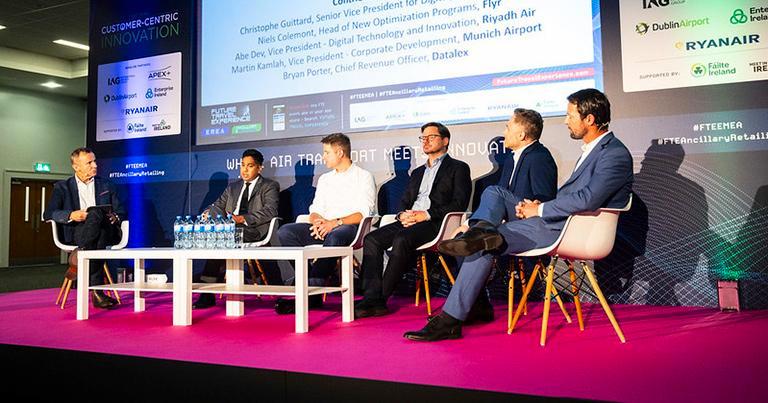
Progressive airlines are transitioning away from legacy approaches, navigating the tech landscape on their journey to becoming fully-fledged digital retailers. It is a trend we expect to accelerate in 2025.
Eric Léopold, Founder & Managing Director, Threedot, and APEX FTE Ancillary & Retailing Content Director, has a unique perspective on airline retailing, which he says has completed the stage of connectivity and entered the stage of differentiated content. “Advanced airlines are embarking on the transition to 100% offers and orders, which means phasing out legacy processes entirely,” says Léopold. “Some airlines are at the beginning of the journey, working on a business case and implementing an API. Technology providers are investing in new solutions, some of which are based on existing retailing platforms. Advanced travel sellers have built their own technology to source content, while others rely on third-party providers, which may modernise their technology soon. Customers should start witnessing the benefits, in terms of offer transparency, choice and personalisation, without worrying about the complexity of servicing.”
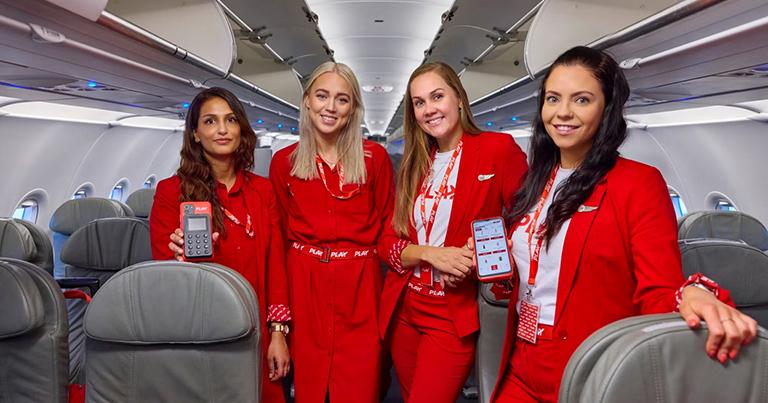
Léopold highlights two recent examples of airline retailing that he has been particularly impressed by: American Airlines, which is pushing NDC adoption and leveraging corporate customers into this effort, and Lufthansa Group, which is methodically adding more technology partners. “I would add a travel seller example, Spotnana, which has built its own technology and is challenging traditional TMCs that rely on third-party technology providers,” Léopold adds.
Other examples include Finnair and Amadeus collaborating with the aim of transforming airline retailing, bringing personalisation and real-time insights. “Better retailing capabilities including dynamic pricing, upselling, cross-selling, bundling and unbundling also support our target of boosting revenues and improving profitability,” said Antti Kleemola, Chief Information Officer, Finnair.
It is certainly a trend to watch and will be explored in more detail at this year’s APEX FTE Ancillary & Retailing event, co-located with APEX FTE EMEA in Dublin on 10-12 June 2025.
Interested in the latest technologies and trends? Sign up to our newsletter >>Urban Air Mobility
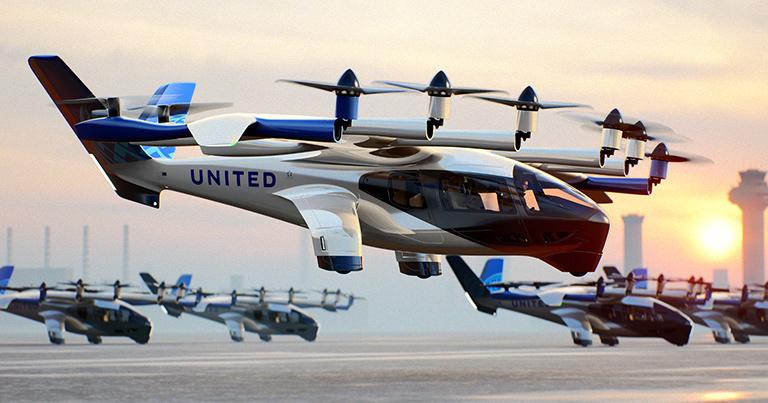
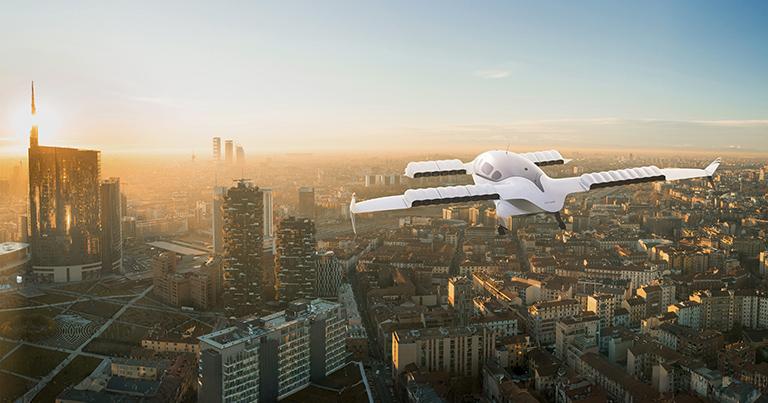
We feel Urban Air Mobility (UAM) is a trend set to accelerate rapidly in 2025. It was a hot topic at CES 2025, with Delta CEO Ed Bastian’s keynote outlining a multi-modal future of travel including a collaboration with Joby on an electric air taxi service. It was similarly a prominent feature of the Future Mobility & Customer Journey conference at FTE Global 2025. The FTE Air MobilityX Keynote Session featured the likes of United Airlines, Archer, Ferrovial and more. Meanwhile, Populous and Cincinnati/Northern Kentucky International Airport (CVG) held a workshop alongside FTE Global – ‘Step into Tomorrow: A 12-Step Program to Unveil Advanced Air Mobility (AAM)’ – breaking down the complexities of AAM, and providing a clear, actionable 12-step guide to help airports and airlines prepare for the future of transportation.
Momentum is being driven by several airlines and airports around the world. UrbanV and Cluster2 Airports are partnering to develop Advanced Air Mobility and Urban Air Mobility in Saudi Arabia; SEA Milan Airports, Lilium and Skyports are developing a passenger electric vertical take-off and landing (eVTOL) network in Italy; Southwest Airlines and Archer Aviation are planning electric air taxi networks utilising eVTOL aircraft at California airports; Korean Air is collaborating with Incheon International Airport Corporation on Urban Air Mobility, and much more. Significant investment is also being made In China – for example, it has just been announced that EHang – a leading Urban Air Mobility technology platform – has completed the inaugural demo of its flagship pilotless passenger-carrying eVTOL in preparation for commercial operations in Shanghai.
A major growth opportunity exists. Indeed, according to SITA’s ‘Meet the Megatrends’ report: “Airlines show increased interest in UAM, with 32% confirming major programs and R&D in UAM services and infrastructure. 33% of airlines invest in VTOL integration technologies for airline operations. UAM services and infrastructure are taking off for airports, with 32% confirming major programs and R&D on this front.”
Interested in the latest technologies and trends? Sign up to our newsletter >>Article originally published here:
12 technology and CX trends that can enhance airline and airport operations in 2025
from Future Travel Experience https://ift.tt/rCkezJZ
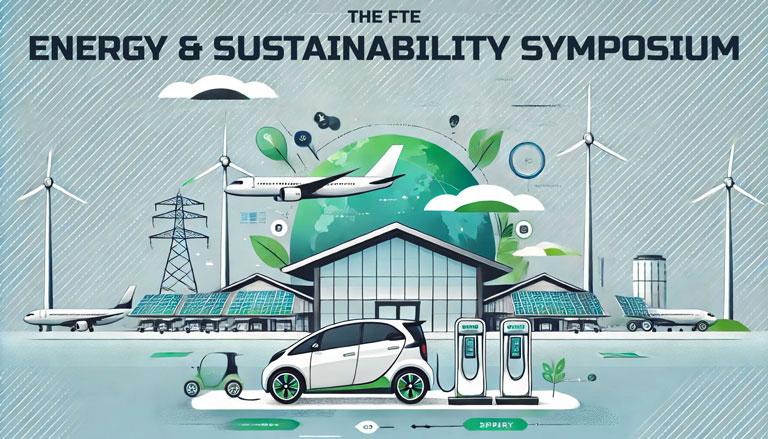
Comments
Post a Comment